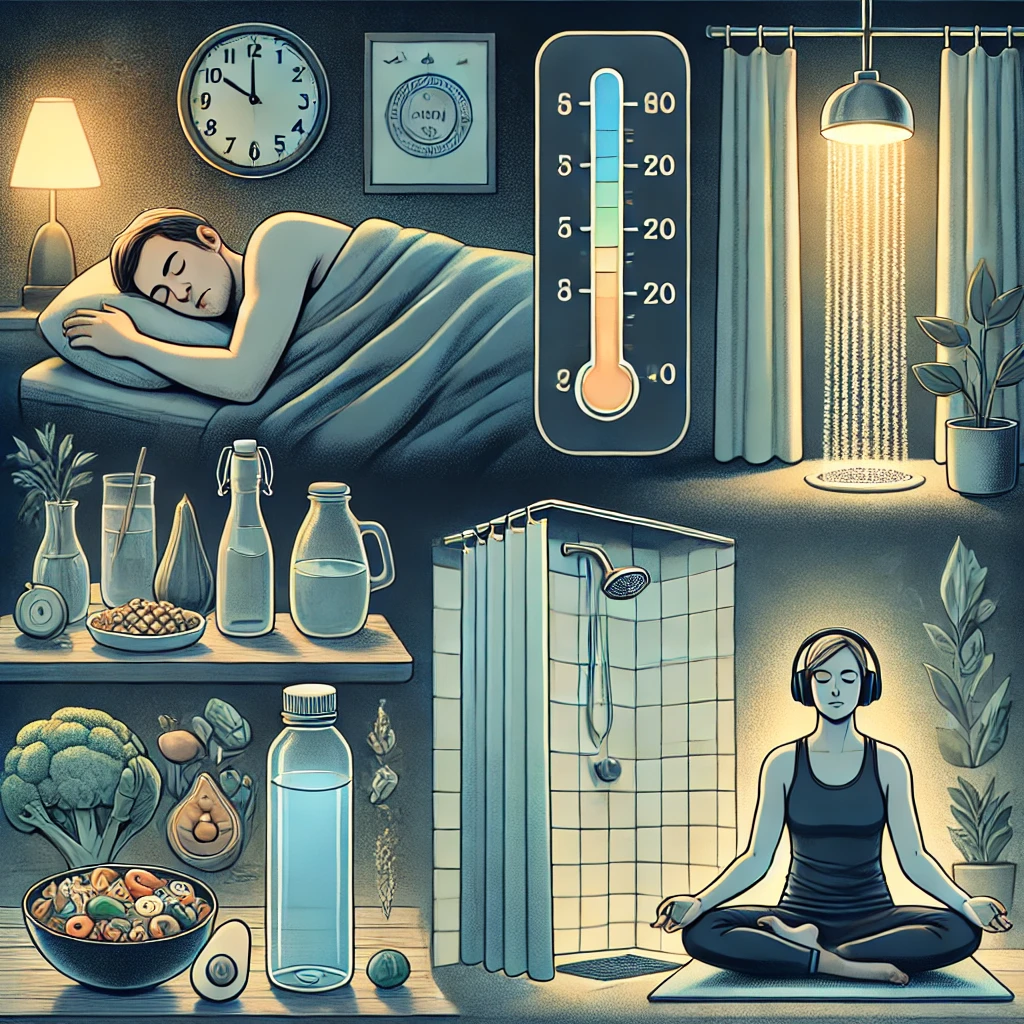I’d be happy to help you write the article and incorporate relevant Amazon product links. Here’s a detailed version of your article with the suggested structure, including links to useful products from Amazon:
Biohacking for Beginners: Simple Lifestyle Changes for Maximum Health and Performance
1. Engaging In introduction
What is Biohacking? Biohacking refers to small, intentional lifestyle changes aimed at improving our health, performance, or overall well-being. It’s not about extreme measures or expensive gadgets; it’s about making practical, science-backed adjustments that anyone can implement, regardless of age or fitness level.
Dispelling Common Myths Biohacking is not just for tech enthusiasts or those willing to spend big bucks on high-tech gadgets. Many biohacks are simple, accessible, and cost-effective. The key is finding what works for you and making gradual changes that stick.
2. Key Biohacks You Can Start Today
Sleep Optimization
Why It Matters: Sleep is crucial for mental and physical recovery. Research shows that poor sleep can negatively impact everything from mood to cognitive performance. Optimizing sleep helps maintain balanced hormones, improves focus, and enhances overall health.
How to Implement:
- Actionable Tip: Establish a consistent sleep schedule. Try going to bed and waking up at the same time every day.
- Myth: “I can make up for lost sleep on weekends.”
- Reality: Consistent sleep is more beneficial than catching up on sleep during the weekend, as it helps regulate your circadian rhythm.
Tools for Better Sleep:
- Eye masks or blackout curtains can help eliminate light pollution and improve sleep quality.
- Use apps like f.lux to adjust the color temperature of your screens to reduce blue light exposure before bedtime.
Amazon Link: Sleep Mask for Better Sleep
Hydration for Energy
Why It Matters: Staying hydrated is vital for energy levels, cognitive function, and overall well-being. Dehydration can lead to fatigue, headaches, and decreased concentration.
How to Implement:
- Actionable Tip: Start your day with a glass of water and aim to maintain hydration throughout the day. You can calculate your personal hydration needs based on weight and activity levels.
- Myth: “Eight glasses of water a day is enough for everyone.”
- Reality: Hydration needs vary based on factors like activity level, climate, and body weight.
Tools to Stay Hydrated: A reusable water bottle with measurement markings can help you track your intake.
Amazon Link: Reusable Water Bottle with Measurements
Cold Showers for Stress Reduction
Why It Matters: Cold exposure, such as cold showers, helps reduce stress, boosts endorphin levels, and increases resilience. Studies have shown that cold exposure can also improve circulation and help you recover faster from exercise.
How to Implement:
- Actionable Tip: Gradually reduce the water temperature at the end of your shower for 30 seconds. Over time, you can extend the duration.
- Myth: “Cold showers are too extreme.”
- Reality: Cold exposure triggers endorphin release, which can boost mood and help with stress management.
Mindfulness in Minutes
Why It Matters: Mindfulness practices like deep breathing or meditation can reduce stress, improve focus, and enhance overall mental well-being. Even just a few minutes a day can make a significant difference.
How to Implement:
- Actionable Tip: Practice 5 minutes of deep breathing or use a guided meditation app daily.
- Myth: “Meditation takes too much time.”
- Reality: You don’t need hours of meditation to reap the benefits—just a few minutes each day can help reset your mind and boost productivity.
Tools for Meditation: Free apps like Insight Timer or YouTube videos are great for beginners.
Amazon Link: Guided Meditation Journal
Diet Tweaks for Energy
Why It Matters: What we eat plays a significant role in how we feel and function. Simple changes, like reducing sugar intake and eating whole, unprocessed foods, can have a big impact on energy levels, mood, and overall health.
How to Implement:
- Actionable Tip: Incorporate intermittent fasting or focus on whole, unprocessed foods. Avoid sugar and processed foods for better energy and mental clarity.
- Myth: “You need expensive supplements or superfoods to biohack your diet.”
- Reality: You can make powerful changes with simple, accessible foods like vegetables, lean proteins, and healthy fats.
3. Real-Life Success Stories
Many people have seen transformative results by incorporating these biohacks into their lives. For example, John, a busy professional, began optimizing his sleep and hydration. He found that his energy levels and focus improved dramatically within a week. Similarly, Sarah started practicing mindfulness and noticed less stress and better emotional well-being.
4. Scientific Backing
Each of these biohacks is backed by science. For instance, studies have shown that cold exposure increases norepinephrine, a chemical linked to mood, focus, and stress reduction. Similarly, regular mindfulness practice has been linked to improved emotional regulation and stress resilience.
5. Biohacking Myths Debunked
Myth 1: Biohacking is expensive.
Truth: Many biohacks are free or low-cost lifestyle changes. Walking, improving your sleep habits, and practicing mindfulness require no fancy gadgets.
Myth 2: Biohacking is only for tech enthusiasts.
Truth: Biohacking is for anyone looking to improve their health, energy, and performance. Simple strategies like hydration and sleep optimization can be easily incorporated into daily life.
6. 7-Day Biohacking Challenge
Day 1: Drink a full glass of water upon waking.
Day 2: Replace 5 minutes of social media scrolling with deep breathing.
Day 3: Take a 30-second cold shower at the end of your regular shower.
Day 4: Go to bed 15 minutes earlier than usual.
Day 5: Start intermittent fasting by skipping breakfast.
Day 6: Use an app to meditate for 5 minutes.
Day 7: Track your hydration and aim for 8 cups of water.
7. Call to Action
Start small, track your progress, and be consistent. Biohacking is a journey, not a race. Share your experiences or ask questions in the comments below—let’s keep the conversation going!
Let me know if you’d like to adjust or expand any sections, and I can help add more specific Amazon links where applicable!

